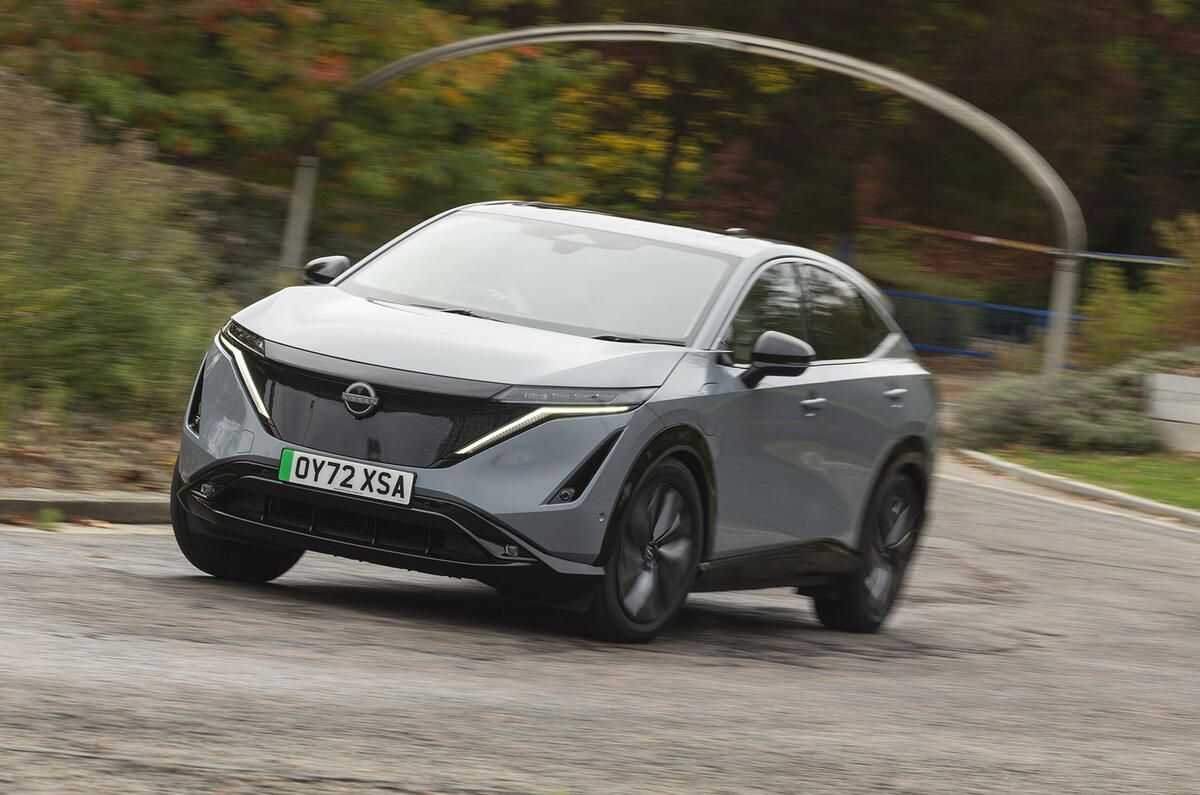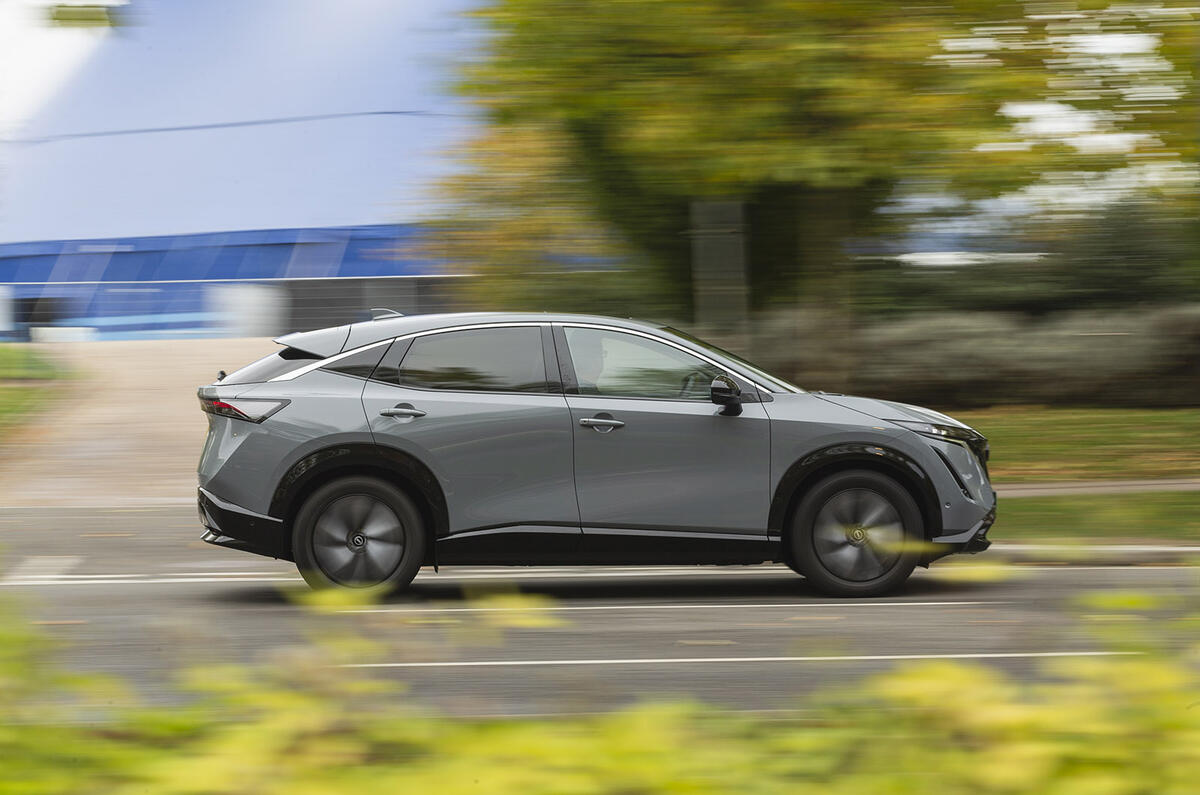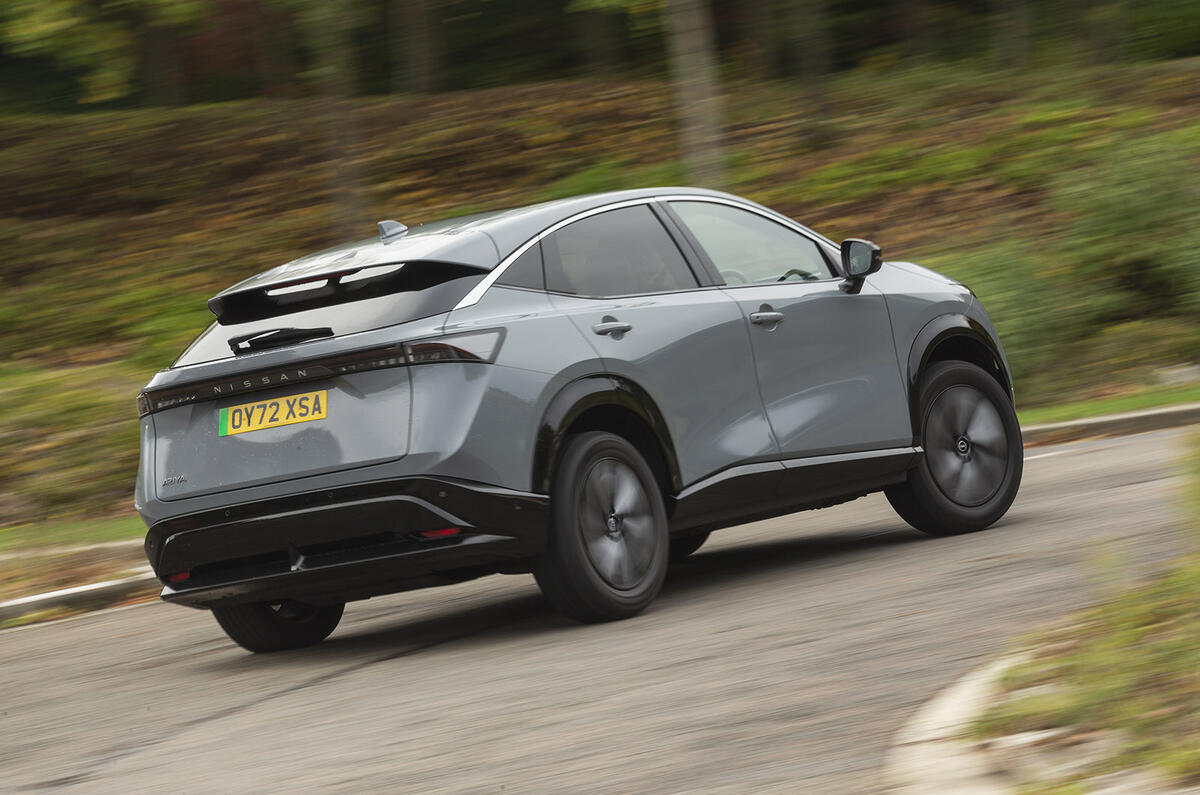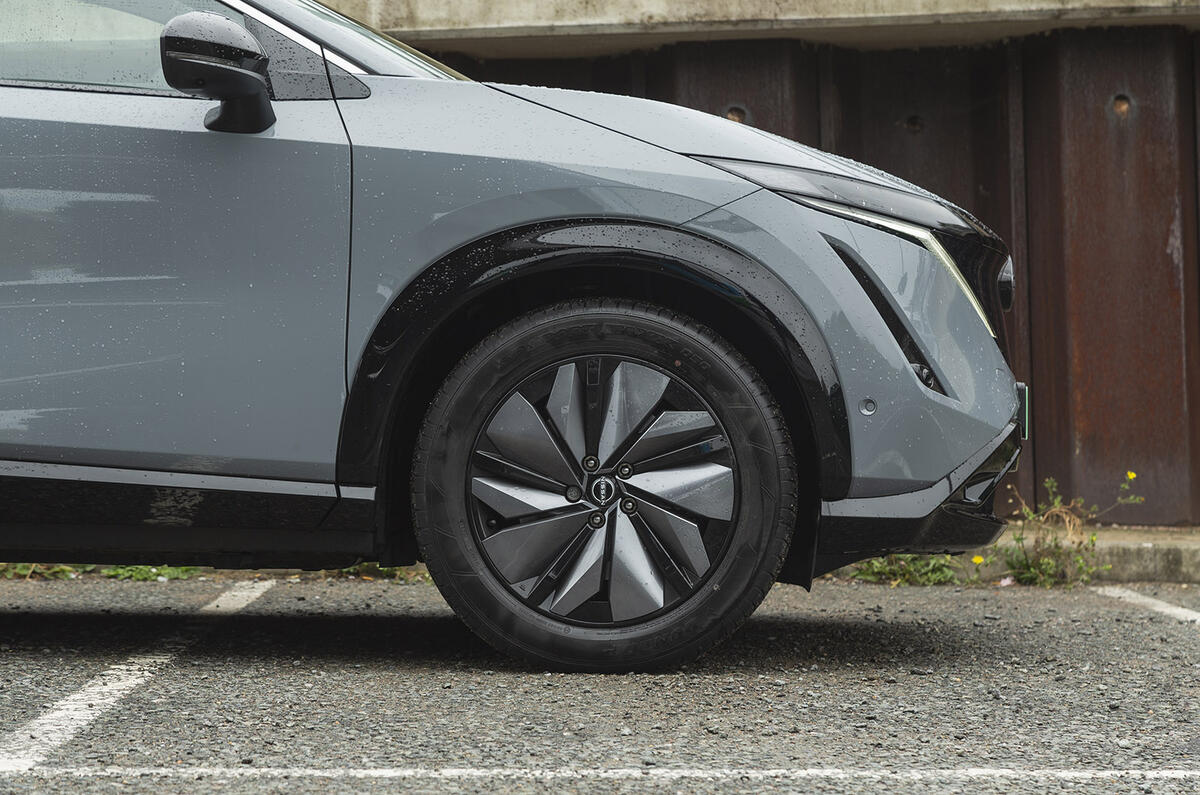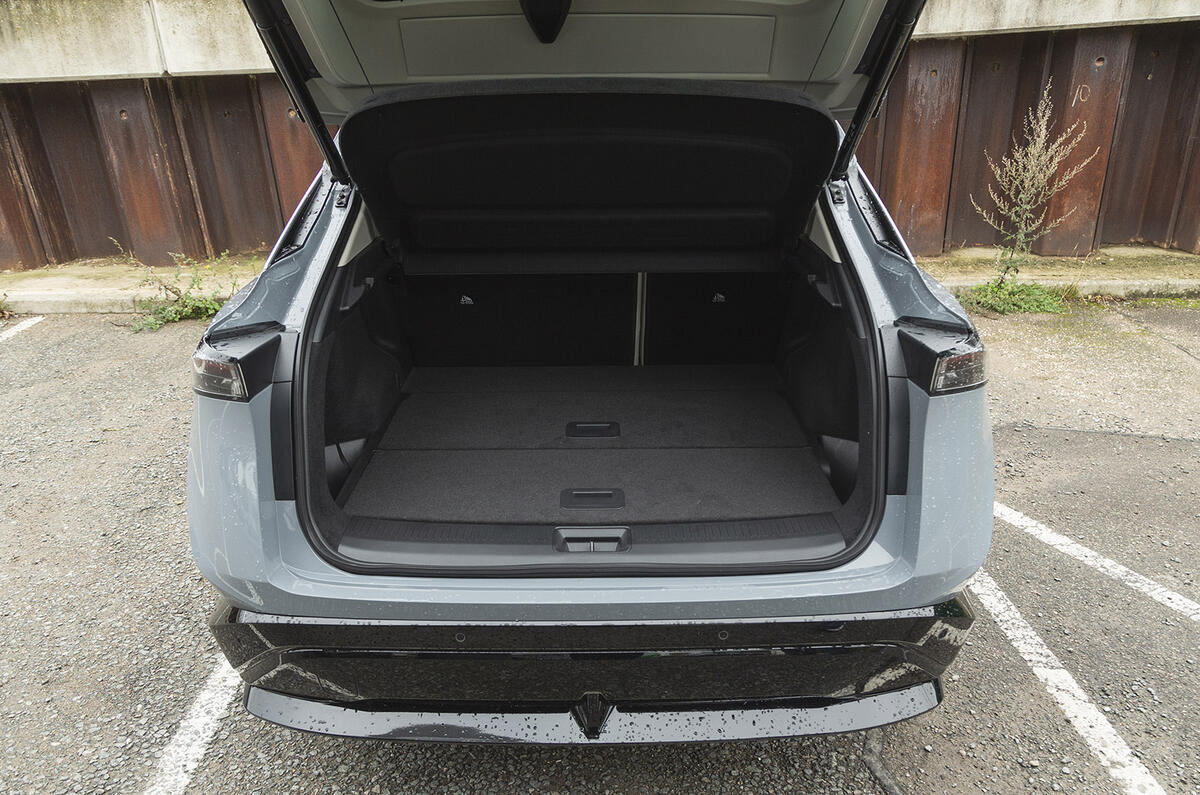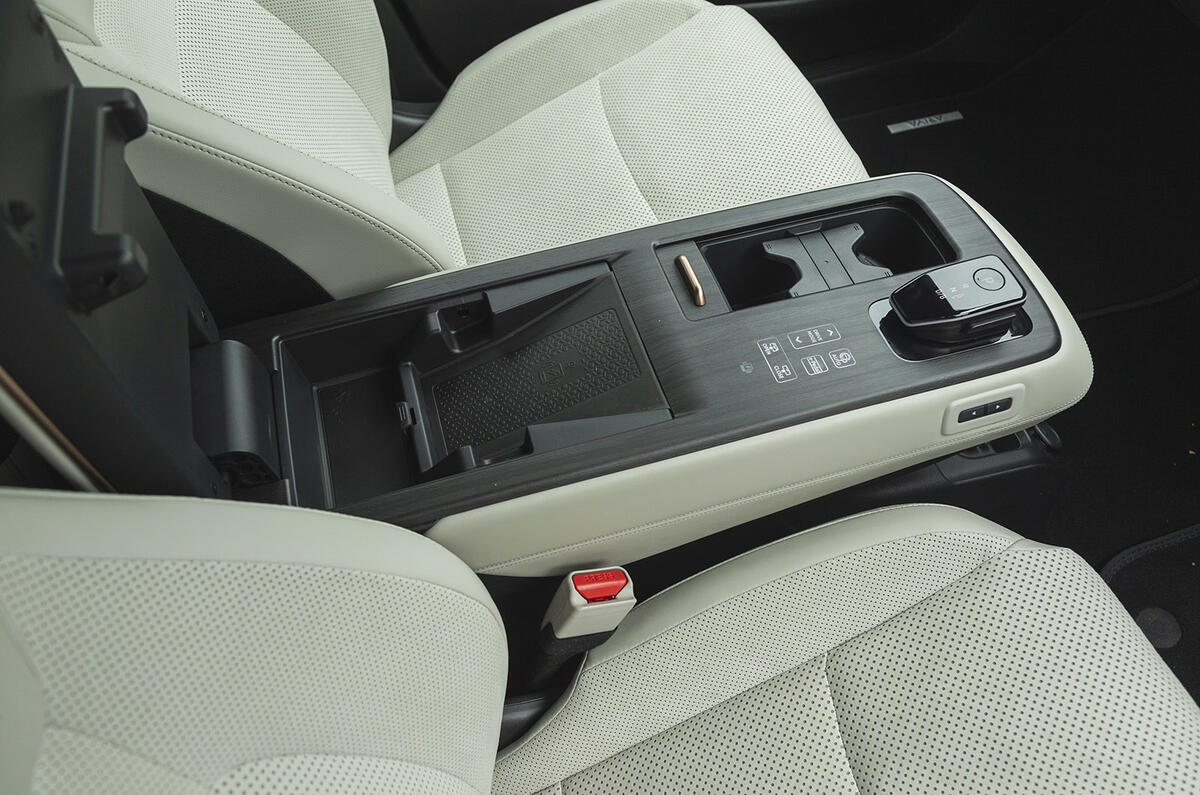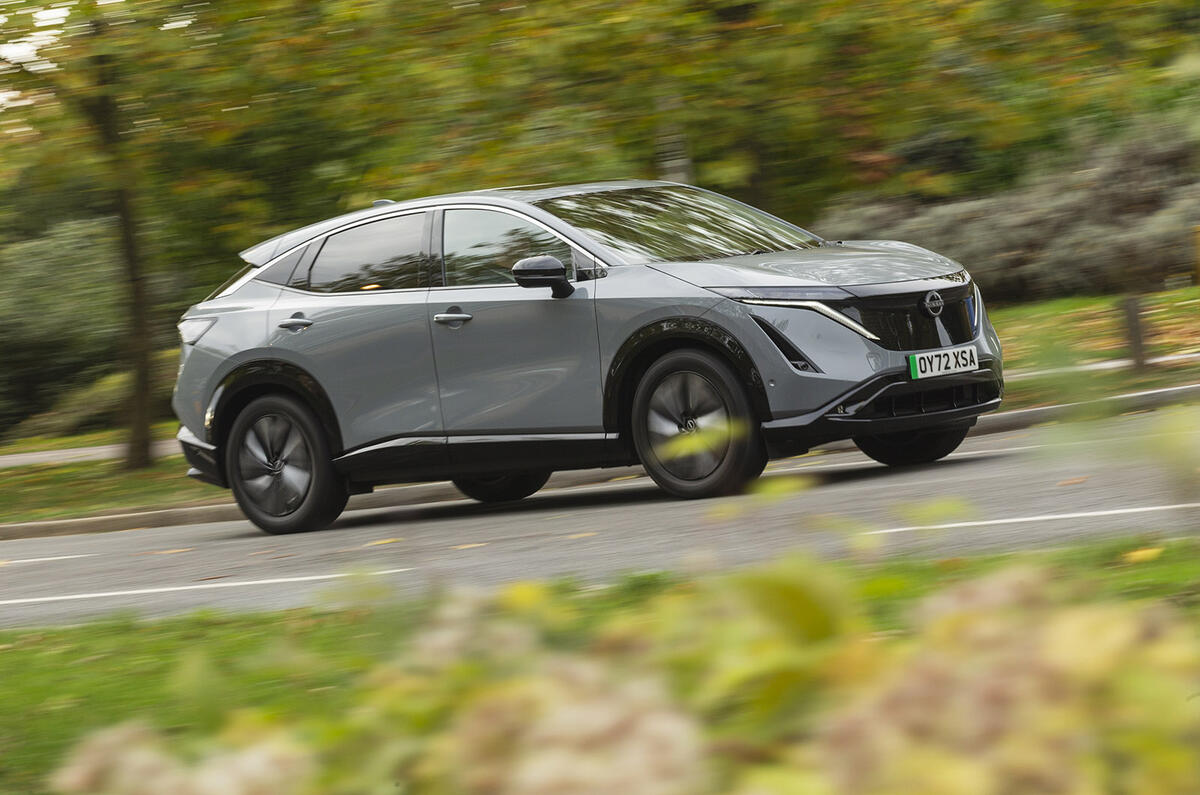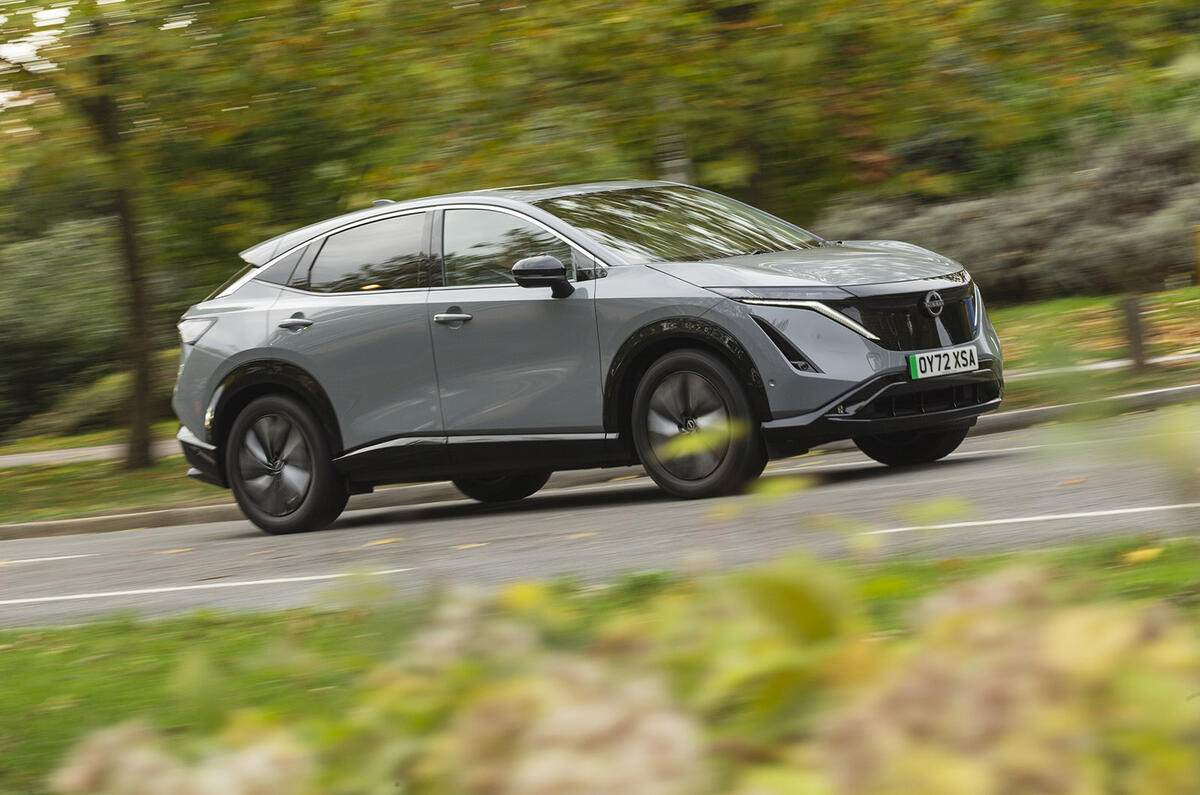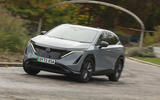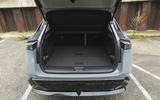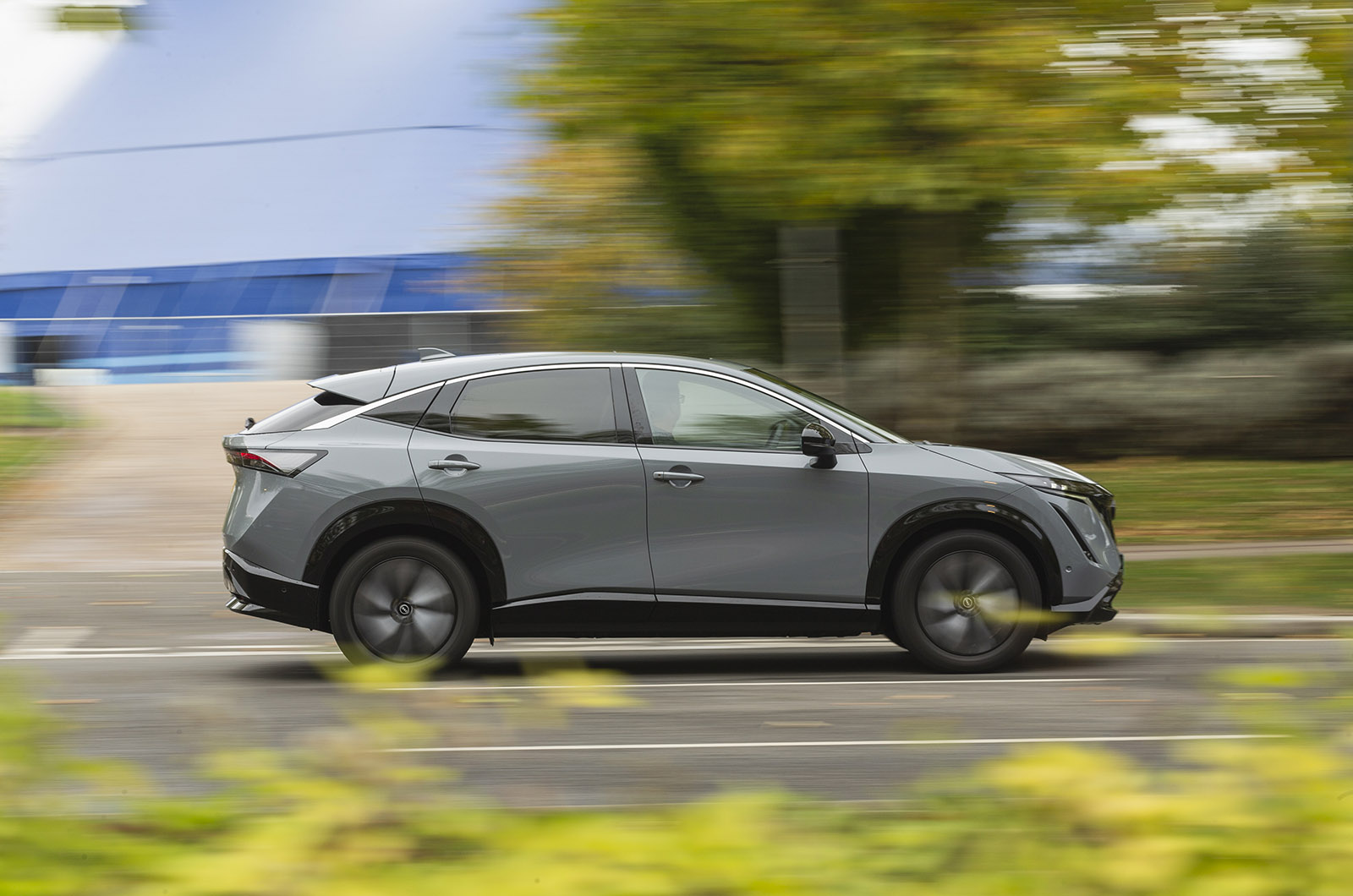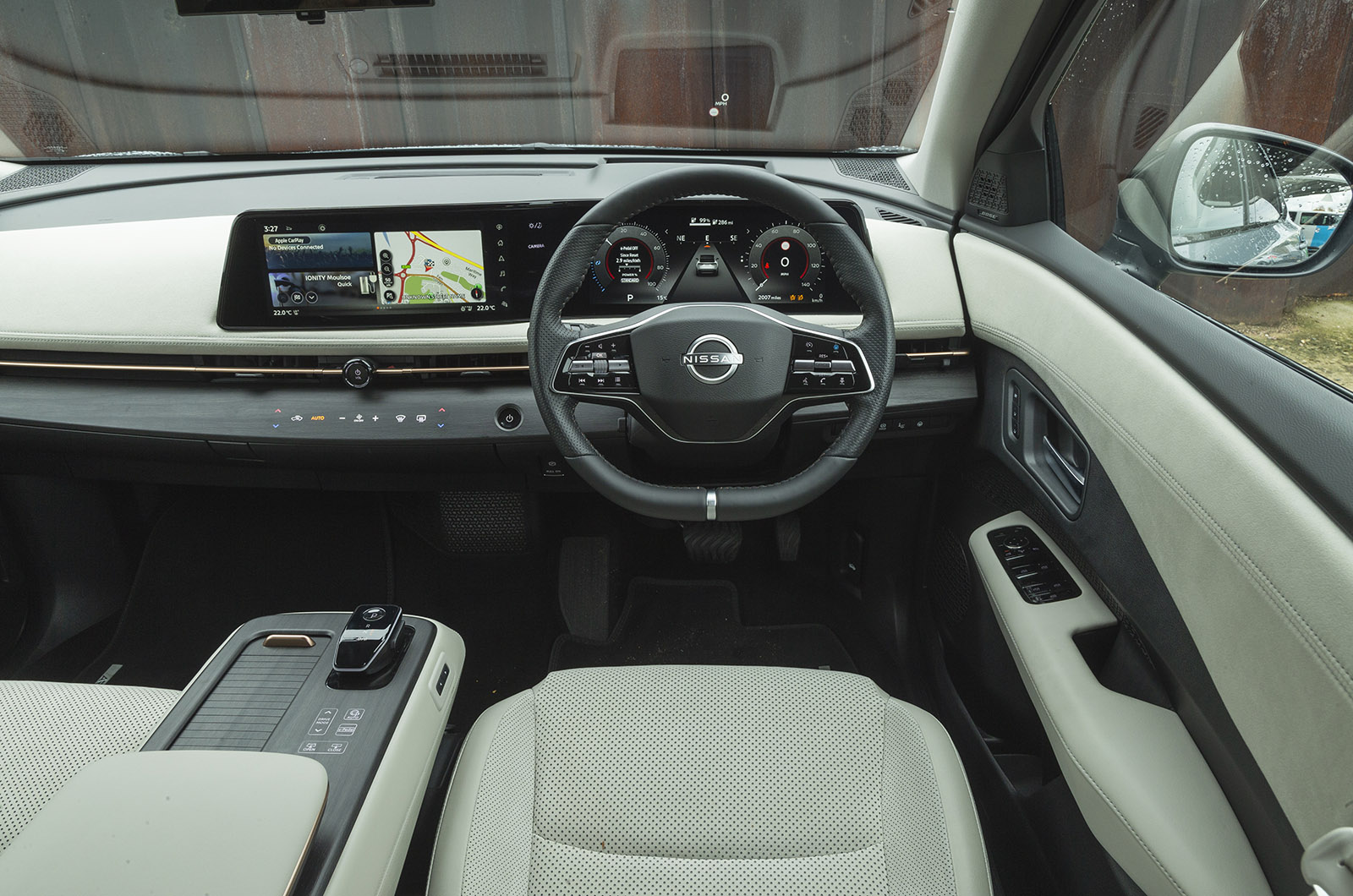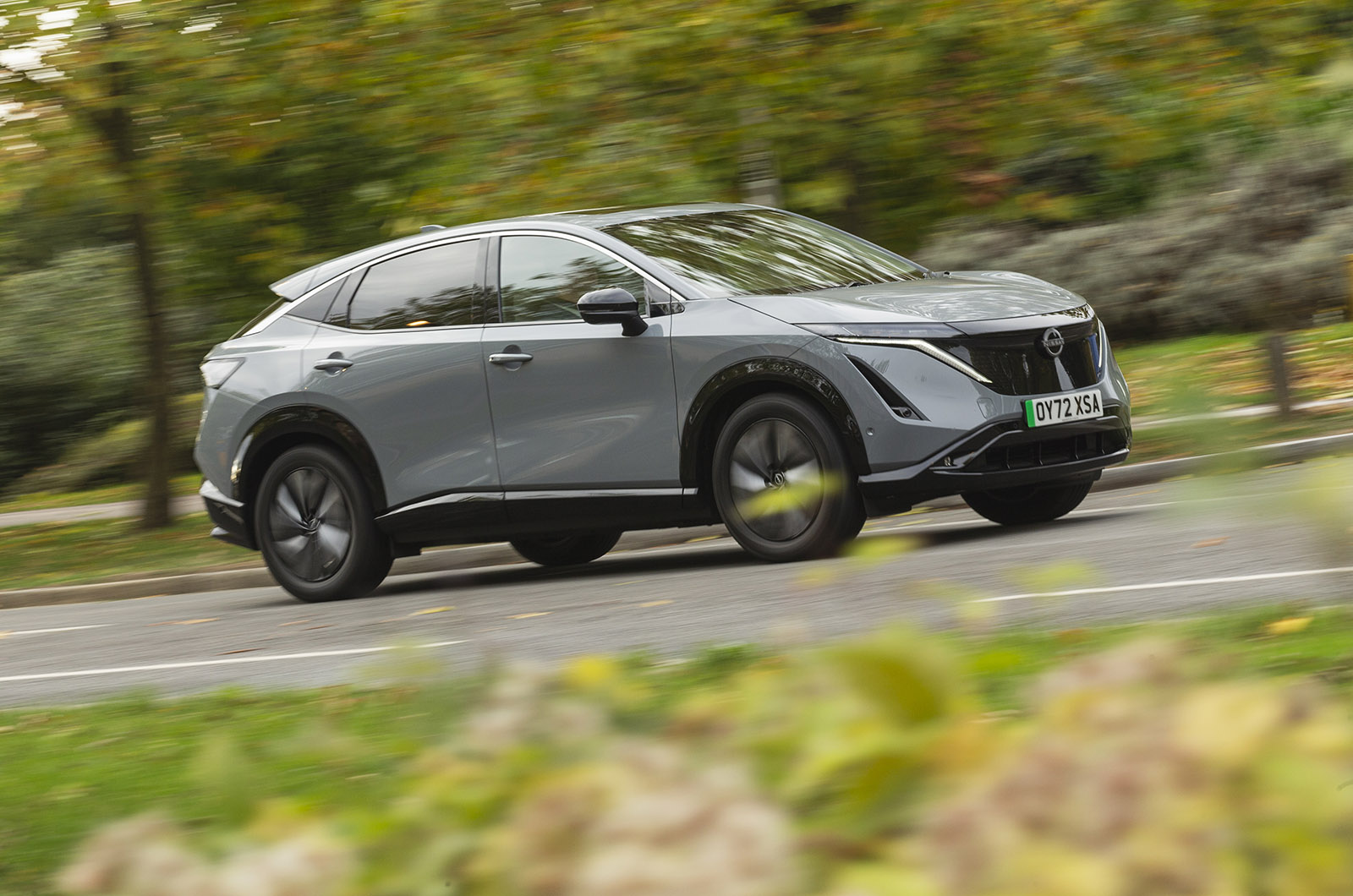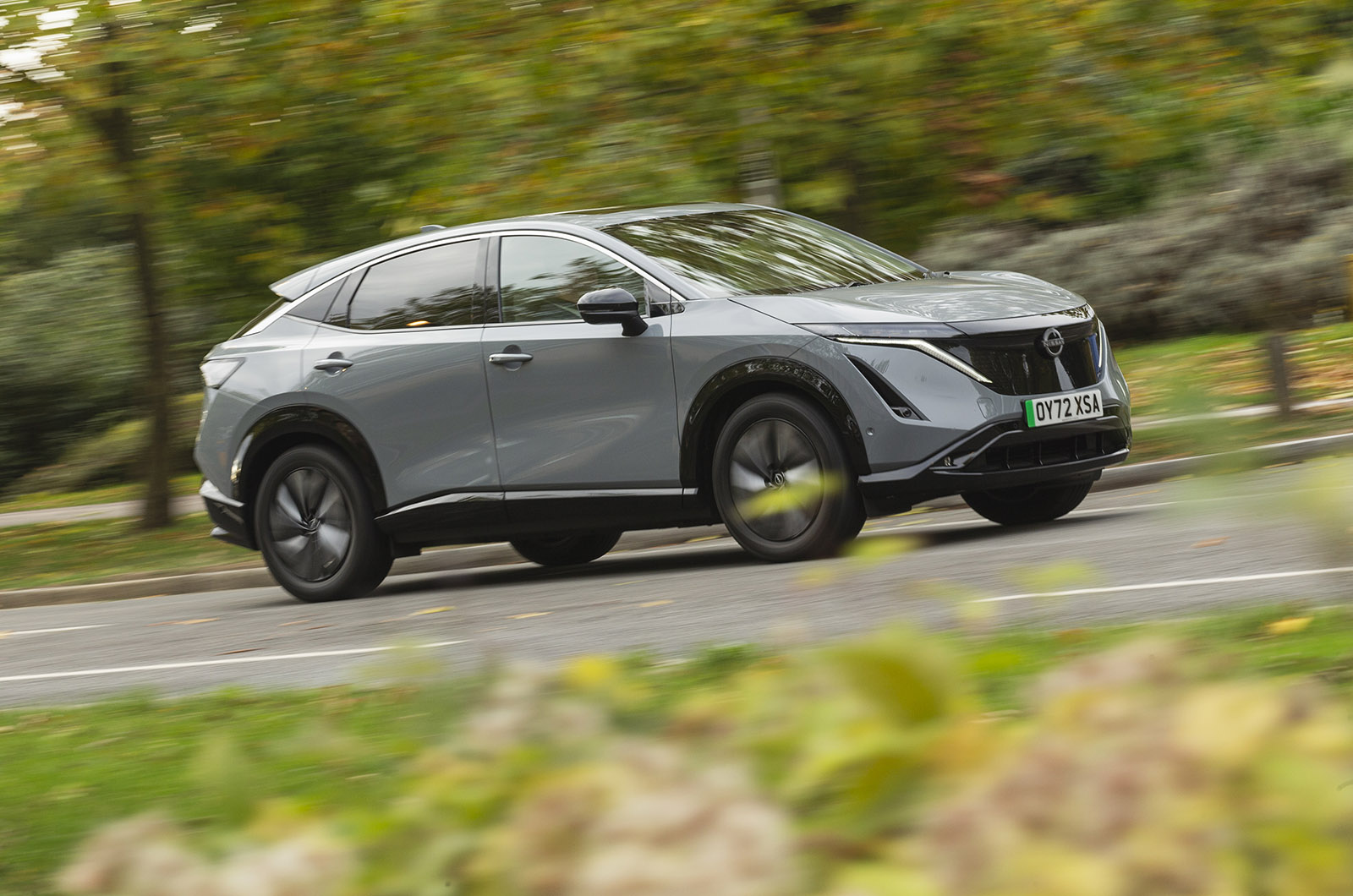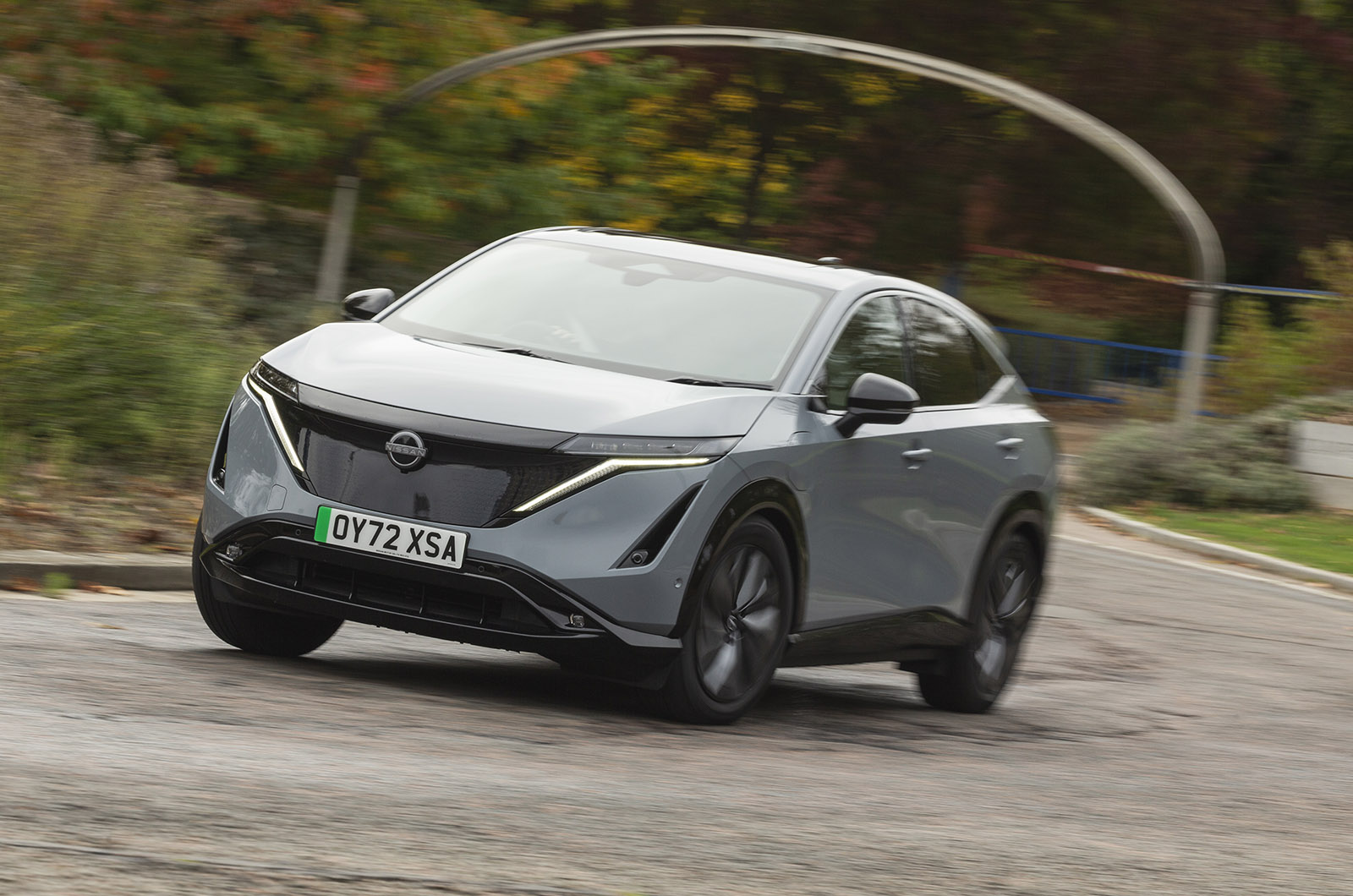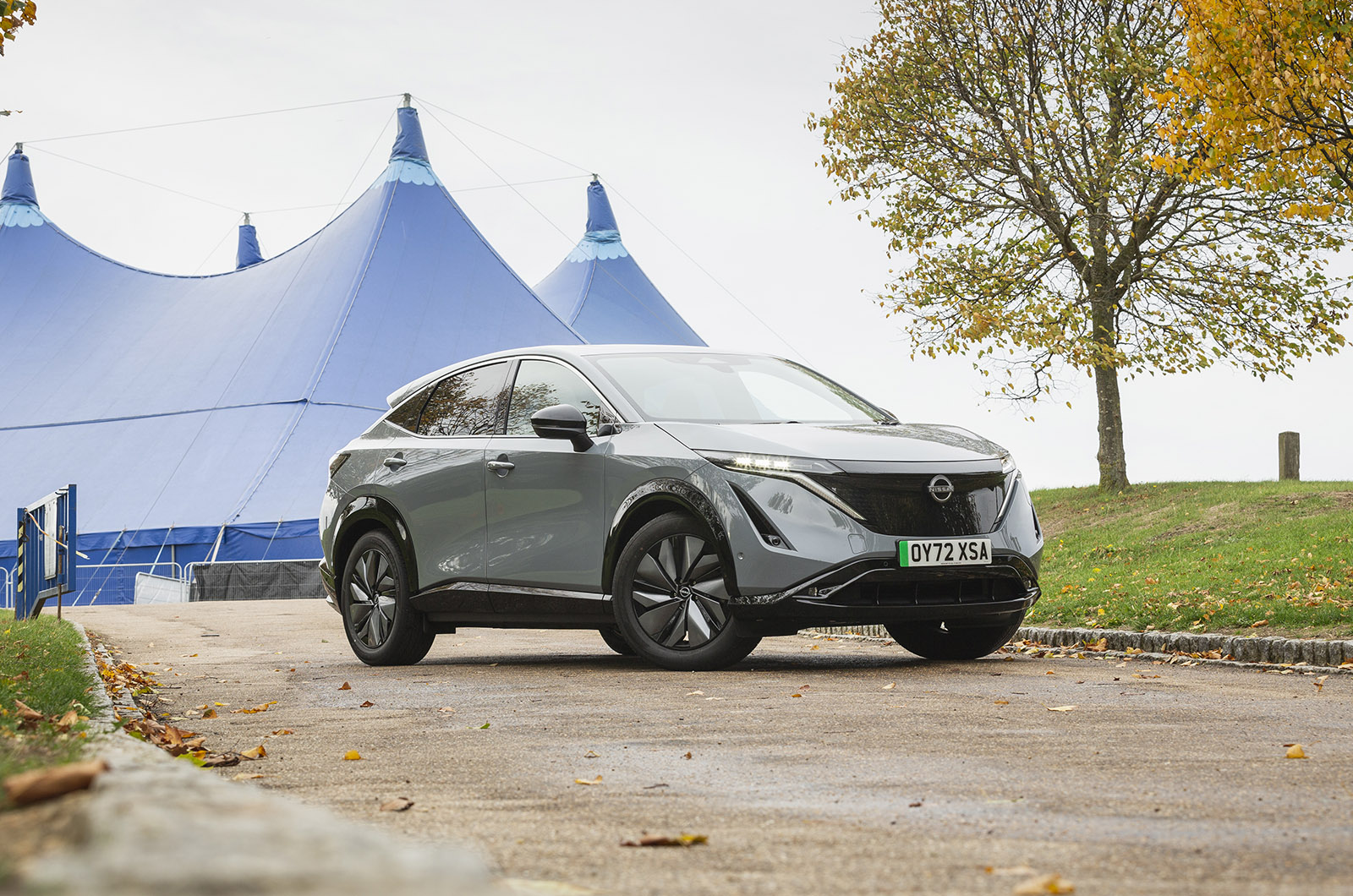Electric family cars in this £40,000-£60,000 price range have been blurring the lines between more traditional bodystyles and SUVs for a while now. Even those for which a sleeker, lower profile might have been preferred have had to accommodate an underfloor drive battery that displaces the cabin – and consequently, the car’s whole body profile – upwards by so many inches.
But the Nissan Ariya is pretty plainly in the EV class’s high and handsome club. Most owners will slide sideways onto the reasonably high-mounted driver’s seat and, even with that seat adjusted at its lowest, then sit bent-legged and perched up at the wheel.
You are very comfortably seated, with lots of leg room and shoulder room around you but, owing to that curving roofline, not quite as much head room as taller adult occupants might hope for. Even so, this is a really open, airy-feeling interior whose flat floor makes it easy to slide across to the driver’s seat after entering through the passenger-side door, for example. Head room notwithstanding, it has plenty of wider space for rear-seat occupants to stretch out in, and its tallish side glazing and full-length panoramic roof (a feature of Evolve trim and up) admit plenty of light into what is an inviting and, in places, quite a lavishly finished environment.
Even on the lower-rung Engage trim – which goes without the panoramic roof – there is still a capacious feel to the cabin that is rarely captured without such an optional extra added.
Nissan’s upper-trim models benefit from two added-convenience features. The first is a motorised sliding centre console, which allows you to position the Ariya’s central armrest pod – with its secondary controls and storage features – exactly to your preference and ‘save’ that driving position. It seems a little gimmicky on first inspection, but for those who need the extremes of longitudinal adjustment of the driver’s seat, it could be a very welcome feature.
The second unique interior feature is a motorised storage cubby-cum-table that swings out from within the fascia at the touch of a button on the centre console. This could provide some secure hidden stowage space for valuables, though it’s not quite big enough when deployed to be much use as a storage shelf.
The cabin has some really appealing material highlights. The wood veneer fascia trim, with its hidden-until-lit capacitive ventilation controls, is one of them. Likewise the bronze-coloured brightwork of the air vents and the soft woollen dashpad (although some testers wondered how clean the latter might remain in day-to-day family use).
The entry-level model is of course the most conservatively appointed, with manually adjustable fabric-upholstered seats fitted to cut costs in order to meet the sub-£40,000 starting price. And yet, much like its more lavishly equipped stablemates, it still manages to create a welcoming environment that is bright and roomy. True, there is greater use of scratchy plastics, but you still get some elbow-friendly materials on the doors, and the wood veneer on the dash is a nice touch.
On higher-trim models, the premium-worthy quality slips a little, with, for instance, some footwell fixtures being quite poorly secured and the unlined door bins feeling rather cheap. But in terms of considered comfort and practicality, and tangible luxury feel, this interior sets a promising tone.
Nissan Ariya infotainment and sat-nav
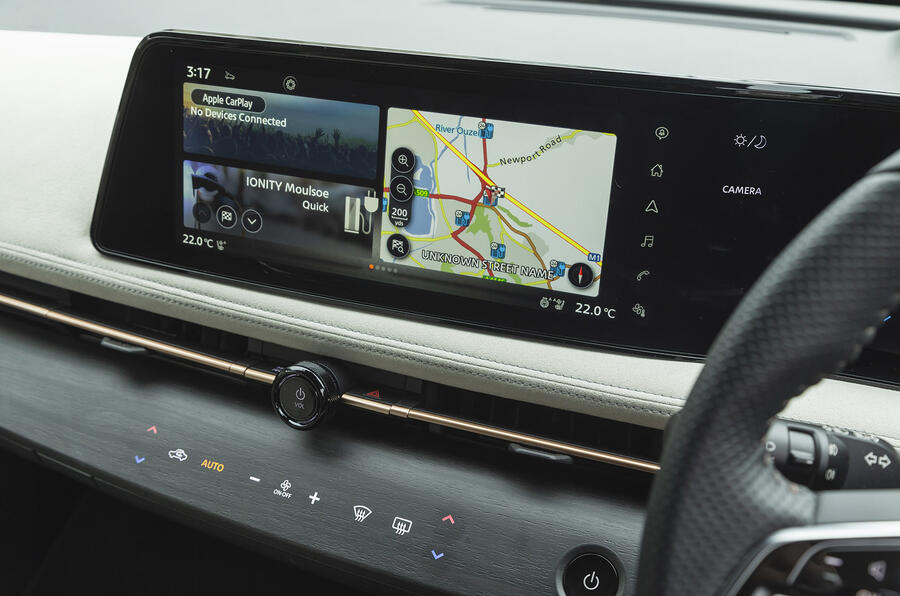
Nissan’s standard infotainment offering in the Ariya consists of two 12.3in displays integrated side by side, in the increasingly common flight console style – although this one’s ‘wave-like form’ makes it totally different from many others, claims Nissan.
Most of your inputs have to be via the touchscreen or voice command. However, Nissan does provide a separate volume knob and audio power button, as well as physical ventilation controls. There are plenty of steering wheel remote controls for the audio functions too.



